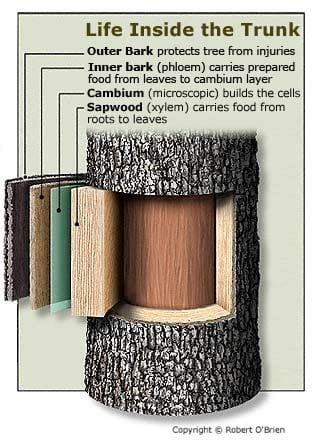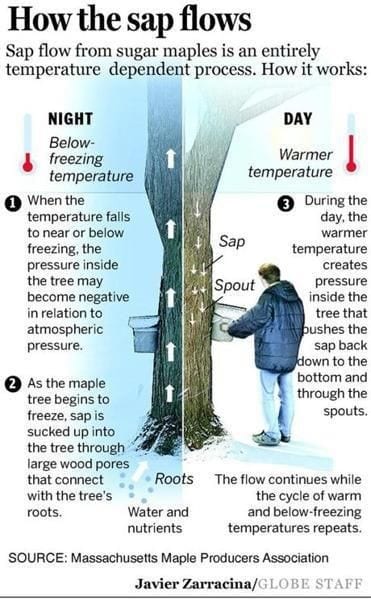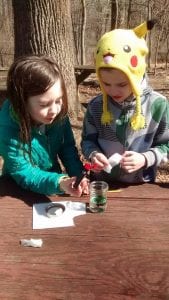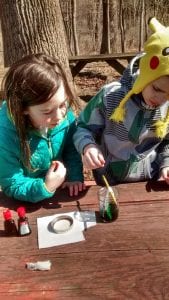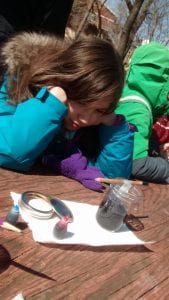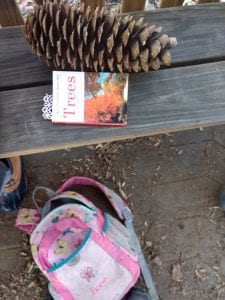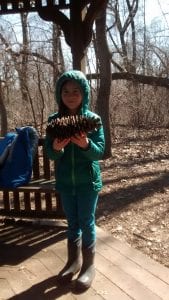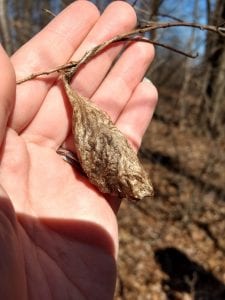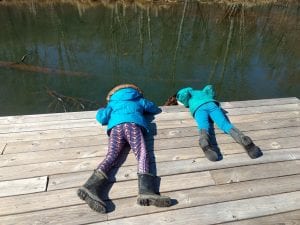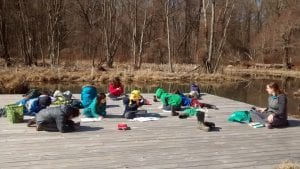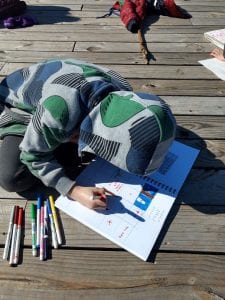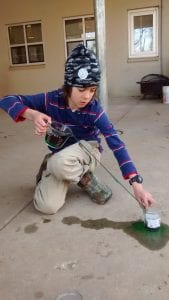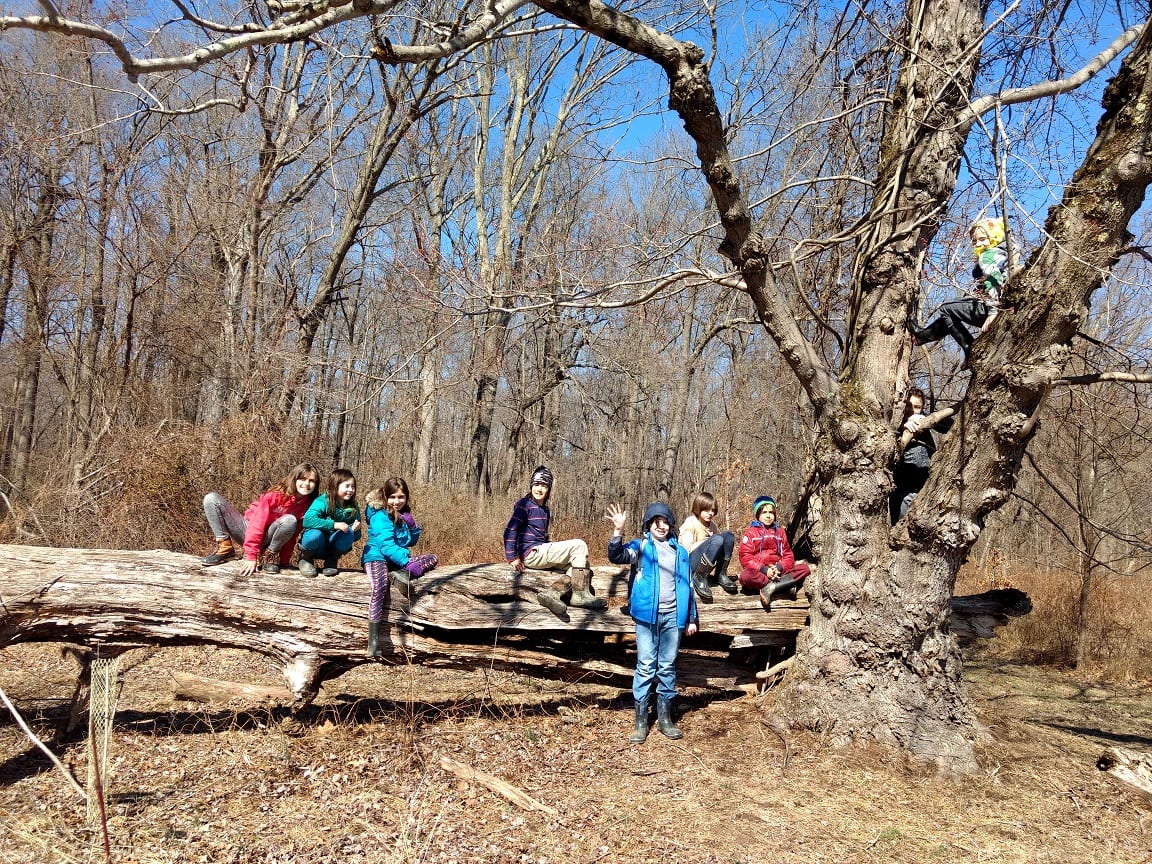Today we finished our maple magic lesson by doing experiments about capillary action, writing our own maple syrup story, exploring the pond and large red maple tree and making pancakes and eating them with real maple syrup! Maple syrup is such a yummy treat, it’s amazing to think that something so delicious can be made by a tree! We learned a bit about maple syrup last week where we talked about how to identify red maple trees and how trees of varying sizes can support different numbers of sap buckets. We visited the barn and learned what we do with sap after it’s collected to make maple syrup and how much sap it actually takes to make a small amount of the sweet treat. So how does all this sap move around in a tree? Where in the tree does the sap move and how is it made? The following are two images we used to describe the parts of a tree and explain sap flow in trees.
We did a capillary action experiment to demonstrate how water can move against gravity. We filled a small mason jar 1/3 of the way with colored water and then dipped a paper towel tied to a pencil over the top (see our images below). We watched as the colored water quickly moved up the paper towel, covering the entire piece in colored dye. This works in a similar way in trees and is explained in the in the diagram above to the right. We did a second experiment later also showing how water moves along a surface, check it out below.
After completing our experiment and reviewing the xylem and phloem and how trees move water, nutrients and sugars throughout their bodies, we hit the trail and hiked to the gazebo. On our way we found something really interesting hanging off one of the spice bushes. It was a brown sack that looked like a leaf. After closer examination we discovered that it was attached to the spice bush with a small piece of silk and there was something moving inside. Based on our observations from its exterior it is a silk moth of some kind. We’ll have to check back in Spring to see if it emerges! At the gazebo we had snack and did our first Junior Naturalist featuring Fiona. Each week one of the kids will be bringing a nature-related item to share with the group and share some information about the item, just like a real naturalist would. Fiona went first and brought a huge pine cone she found in New York. She also brought a tree ID book with her and she read the description of the tree her family thought it was and it did seem to fit the description of a sugar pine tree. Sugar pine tree’s natural range is predominantly on the western half the US.
Our adventure that day took us down to the large pond in the Wetlands Meadow. We climbed the large red maple tree, identifying the opposite branches, and practiced climbing and balancing on the huge log nearby. We explored the pond, looking for frogs and tadpoles, which are starting to emerge with the warmer weather. We heard spring peeper frogs off in the distance, one of the first signs of spring! A few other signs of life we found in the pond was the spreading algae and snails. Snails are a great way to control algae populations in water because they love to eat it. They also will eat aquatic plants, so you don’t want TOO many. We found some pouch snails attached to a piece of plastic in the pond. There were also eggs attached as well, so we decided to leave it in a place that it could be later retrieved after the snails and eggs were gone.
After some free play we gathered on the dock and wrote our own maple syrup or pancake story to finish off our two week lesson on maple sugaring. We read our stories the following week in class. Some of us wrote stories inspired by Native American legends, others wrote stories using only pictures like a comic and others wrote stories featuring maple syrup monsters. With little time left in class and the sun disappearing behind the budding trees, we hiked back to Irvine. We finished the day with some yummy pancakes and real maple syrup and doing a second experiment showing how water demonstrates the property of cohesion, where the molecules essentially stick together and travel down a string. This also applies to our capillary action experiment where the water molecules “stick” together and travel up a surface like a paper towel.
